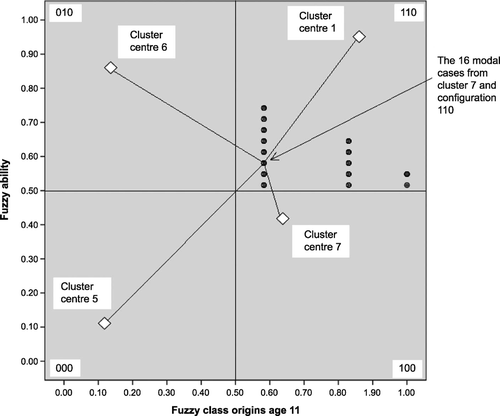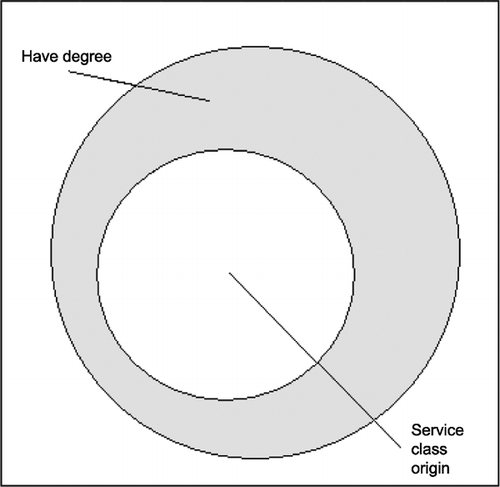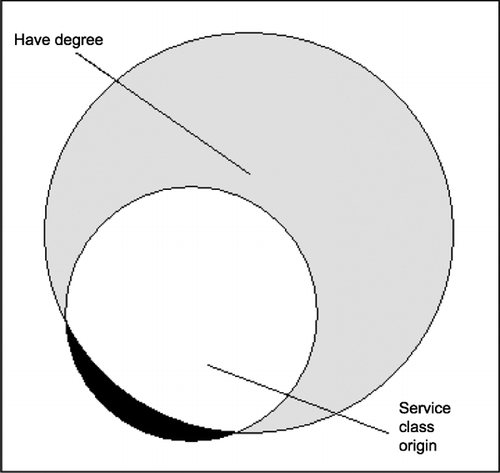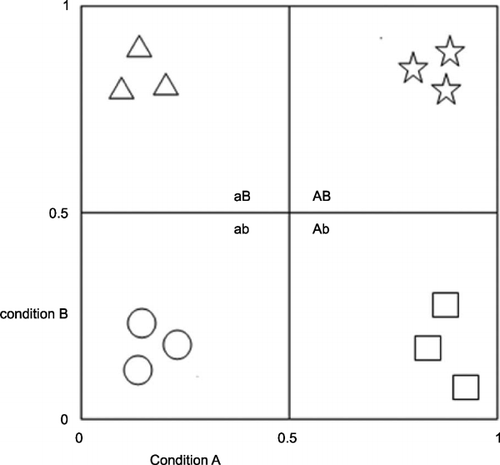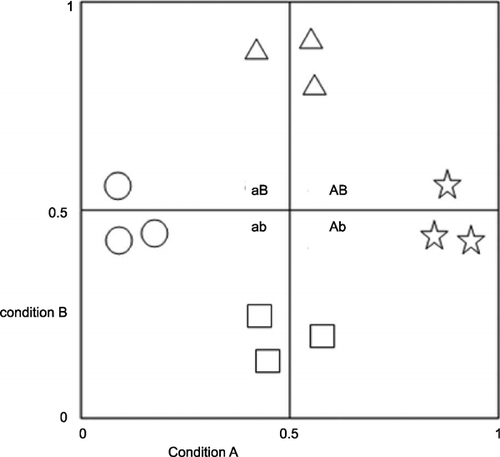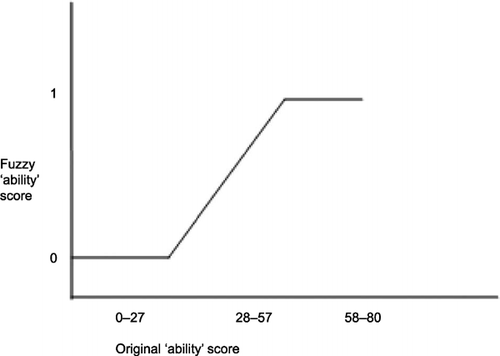Figures & data
Table 1. Highest qualification better than ‘Ordinary’ level by class, ability and sex (Cooper & Glaesser, Citation2007).
Table 2. Consistency and coverage indices.
Table 3. Fuzzy memberships in A and B and derived sets.
Table 4. Class scheme employed (Erikson & Goldthorpe, Citation1993) and fuzzy scores.
Table 5. Fuzzy scores for highest qualification at age 33.
Table 6. Cluster centres from FCA.
Table 7. The fsQCA configurations by best FCA cluster (number of cases).
Figure 6 The 155 cases in both configuration 110 and with maximum membership in fuzzy Cluster 7 (with four cluster centres for females).
